My right foot is pushing down so hard I’m making a new dent in the floor, yet I’m not gathering any speed. Cars are swarming in the rear-view mirror NASCAR-style, looking for the chance to blast past or through me. There’s a soaking wet hairpin coming up, and slowing down will result in me wearing a VW Golf as a necklace, so there’s only one thing to do: strain a bicep hauling the little car through on the door handles and hope terminal understeer doesn’t see me ploughing off the tarmac and not stopping until I hit Austria. The Golf riding my chuff is treated to a slow-motion display of will-it-won’t-it topple over, but thankfully I make it around the bend shiny-side up.
I wish I could say I was being a helmsman in the never-ending pursuit of bringing you a delightful story. Man, machine, road, harmony – all that at-the-limit bollocks. Nope. The above tale of vehicular terror took place at less than sixty kilometers an hour, not miles per. In fact, it was slightly less speed than that, because the car in question – a Yugo, as you have surely surmised by the top graphic – stubbornly refused to hold onto any velocity whatsoever when presented with even the mildest of inclines. This is the grim reality of driving a Yugo, a car without a country nor any redeeming characteristics whatsoever.
Automotive internet hipsters will proclaim that no small Euro hatch based on Fiat mechanicals that combines a manual gearbox with unassisted steering can be that bad. Let me assure you, it very much fucking can be that bad. Possibly even worse. Maybe you harbor an inkling that a Yugo is a bit rubbish, but somehow charming all the same. I am here to disabuse you of that thinking straight away. A car this horrible cannot be reassessed or have a redemption arc. After driving one, I cannot in good conscience lead you up the aisle to a thoughtful consummation because the Yugo is rottener than week-worn knickers and worse than a case of uncurable turbo Herpes.
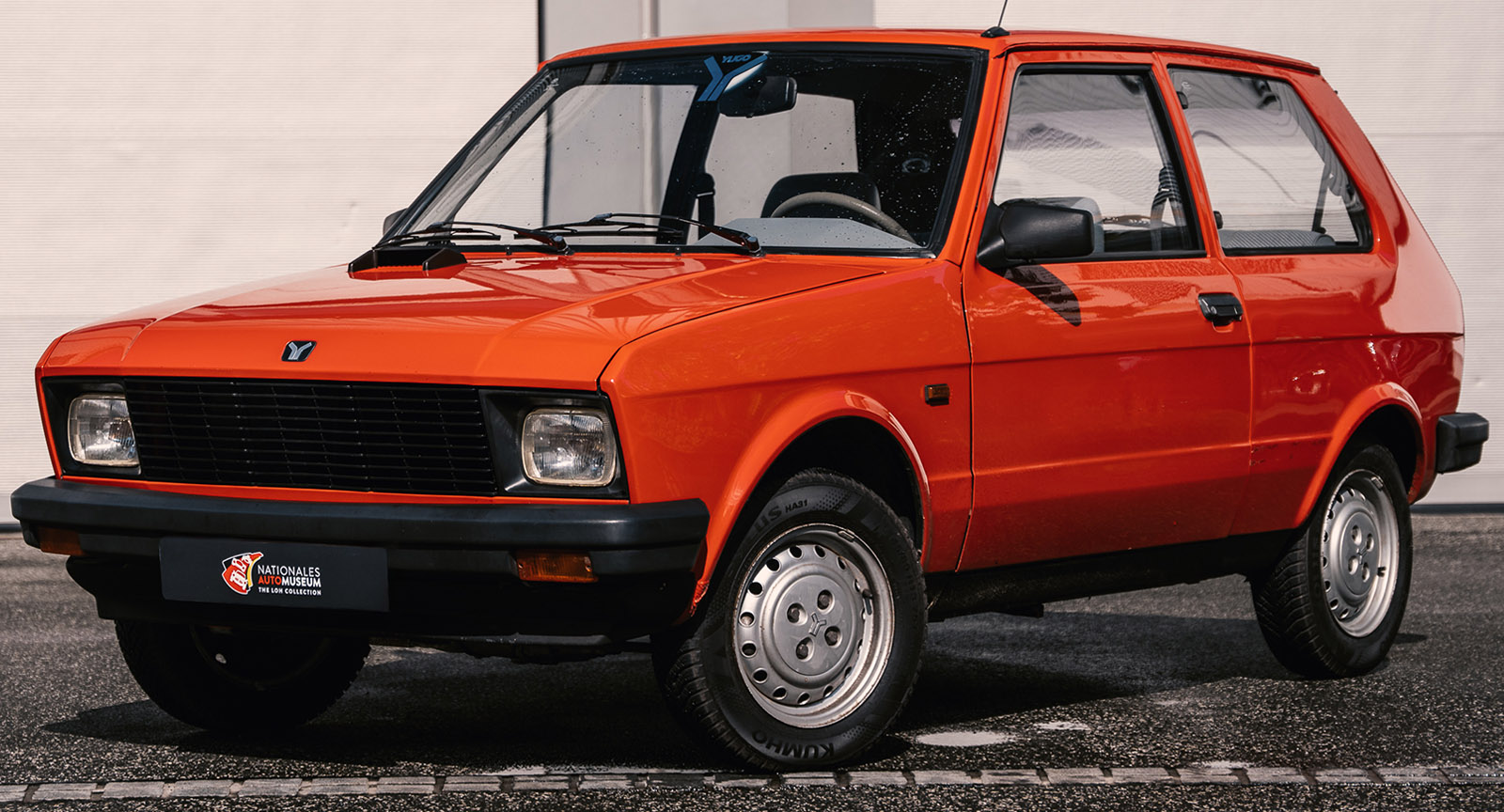
Where It All Began
Our tale of woe begins after the second World War. Although primarily a weapons manufacturer, Zastava Arms had also been building Chevrolet trucks in the former Yugoslavia until that ended when the Axis powers invaded in 1939. After liberation, the company wanted to expand beyond armaments, so they built a new factory named Zavodi Crvena Zastava (Horse Boiling and Dangerous Toy Company, probably). By 1954, they had signed an agreement with Fiat to build the Italian cars under license, starting out with 1100s and 1400s. Then, in 1955, the company hit automotive paydirt with a version of the Fiat 600. In 1960, the Zastava 750 was born by bolting in a bigger 25bhp 767cc engine, which upped performance over the original from glacially slow to merely catastrophic. If my experience is anything to go by, this would remain a Yugo trademark. As had happened in Italy, these simple, rugged, affordable little cars became extremely popular and played a big part in putting the former Yugoslavia on wheels.
In 1969, Fiat dropped yet another revolutionary small car, the 128. Although front-wheel drive had been pioneered by the Mini, that car’s powertrain was compromised by putting the gearbox in the sump and the radiator inside the fender – both galactically stupid decisions – which the Fiat 128 improved upon. Like an unwanted case of rusty ass-water, the Zastava copy – the 101 – appeared two years later. Impressively, the bodywork was reengineered to have a hatchback, way before any of the Western European manufacturers had managed such a feat. To replace the aging 750, Zastava then shortened the 128/101 platform, gave it a body of their own design, and unleashed the resulting unholy bastard upon an unsuspecting world in 1980 – the Zastava Yugo.
These two cars, along with the company itself, would undergo a series of name changes across different markets, presumably to protect the guilty. The Zastava 101 became the Yugo 311, and the new smaller model was the Yugo 45/55/60 (with the number dependent on how many Balkan farm nags were under the hood). By the early 1980s, these fucking miserable grinding boxes were beginning to infect western markets, selling to the sort of proudly stingy people who refuse to split the bill equally at dinner. They sold by virtue of being half the price of an equivalent Euro supermini, because in terms of driving dynamics, build quality, equipment, and engineering, you were getting half the fucking car. The Fiat 128/Yugo 311 was a good car for its time; unfortunately, that time was a decade earlier, in 1969. The smaller 45/55 lumbered with a heavy body that crippled its performance. Despite being 14” (365mm) shorter than the Fiat 128 the Yugo 45 was 165lbs (75kg) heavier, because it was made with the finest grade pig iron.
Roll Up, Roll Up, Get Your Yugos Here
By the middle of the eighties, the Kragujevac factory was a considerable source of pride for the region, providing good jobs and building 200,000 cars a year. This caught the attention of carnival barker and P.T. Barnum of the automotive industry, Malcolm Bricklin, whom Rolling Stone magazine described as,“Brash, bombastic, and pathologically prone to betting the farm on pie-in-the-sky automotive endeavors.”
Bricklin’s route to fame and fortune involved finding cheap cars from elsewhere in the world and foisting them onto American consumers, something he first did with the Subaru 360, a car more suited to golf courses than American highways. After further automotive misadventures, including his own half-assed SV-1, he scoured the globe looking for another cheap car to bring stateside – and in the Yugo, he found it. With a $3990 rice sticker slapped across the windscreen, American tightwads of 1985 could repel polite society just like their European cousins. Witness these hapless squares smiling in the face of impending trade-in value calamity. Serves them right.
Looking at the Yugo, it’s the definition of anonymity. More banal than budget hotel room artwork, it resembles those non-cars insurance companies use in their commercials so they don’t get sued into the middle of next week. It’s a dour box perfect for the shame-free unbranded sportswear normies who would have considered this acceptable transportation. The Yugo looks like a car designed by a drunken Yugoslav engineer, half remembering a VW Polo he once spotted while at an export conference in West Berlin. Blockier than off-brand Lego, there’s no sensitivity or nuance in any of the lines. It’s like an afterthought created from no thought in the first place. The stance is atrocious; the body is too big for the track and wheelbase – or rather, those dimensions are too small. The Yugo is so knock-kneed that if it weren’t so bloody heavy for its size, a strong wind would blow it over.
My Sinuses Are Burning
This parallel-universe car gives me a demonstration of how its engineers had never even clapped eyes on a Western supermini when I try to unlock it. There’s a small black plastic semi-circle on the door where you would normally expect the interior locking plunger to be. This little circle has a green sticker on it, so naturally, I yank the handle expecting the door to be unlocked. But no. Green means the door is locked, and then when you turn the key, the black semi-circle rotates to present you with a red sticker, indicating the door is now unlocked. What in the actual jumping blue fuck is that all about? Does green indicate to the driver you’re now good to go and get blootered on plum brandy, comrade?
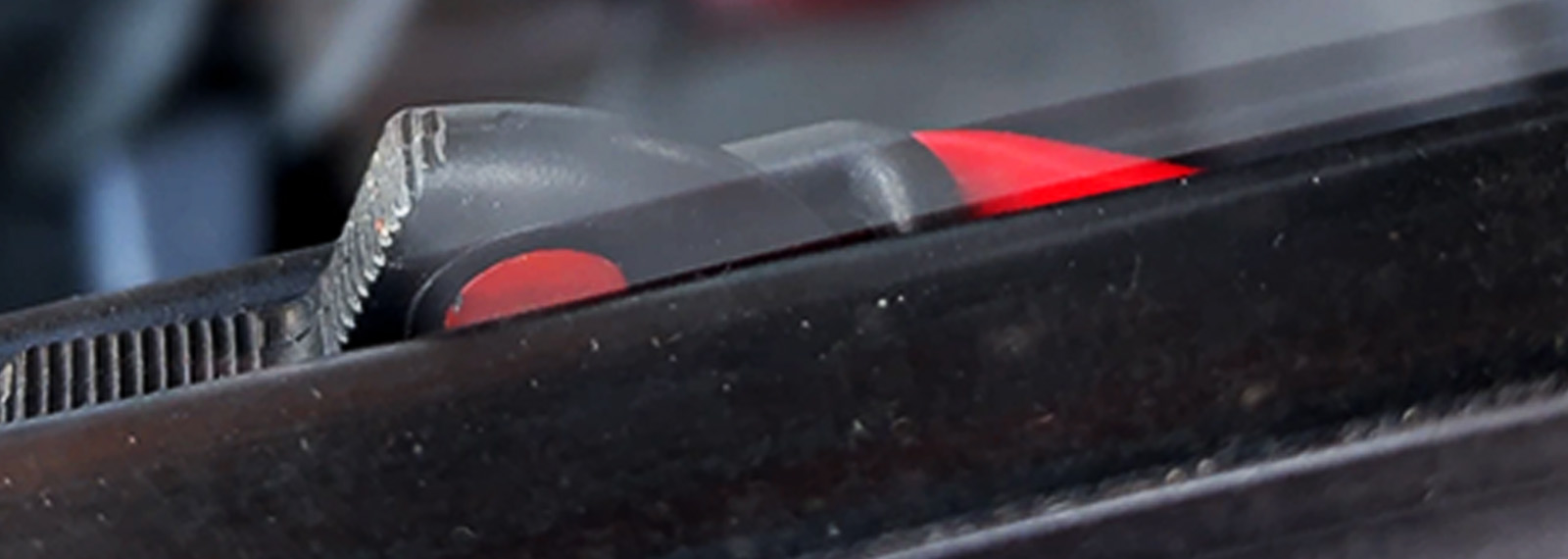
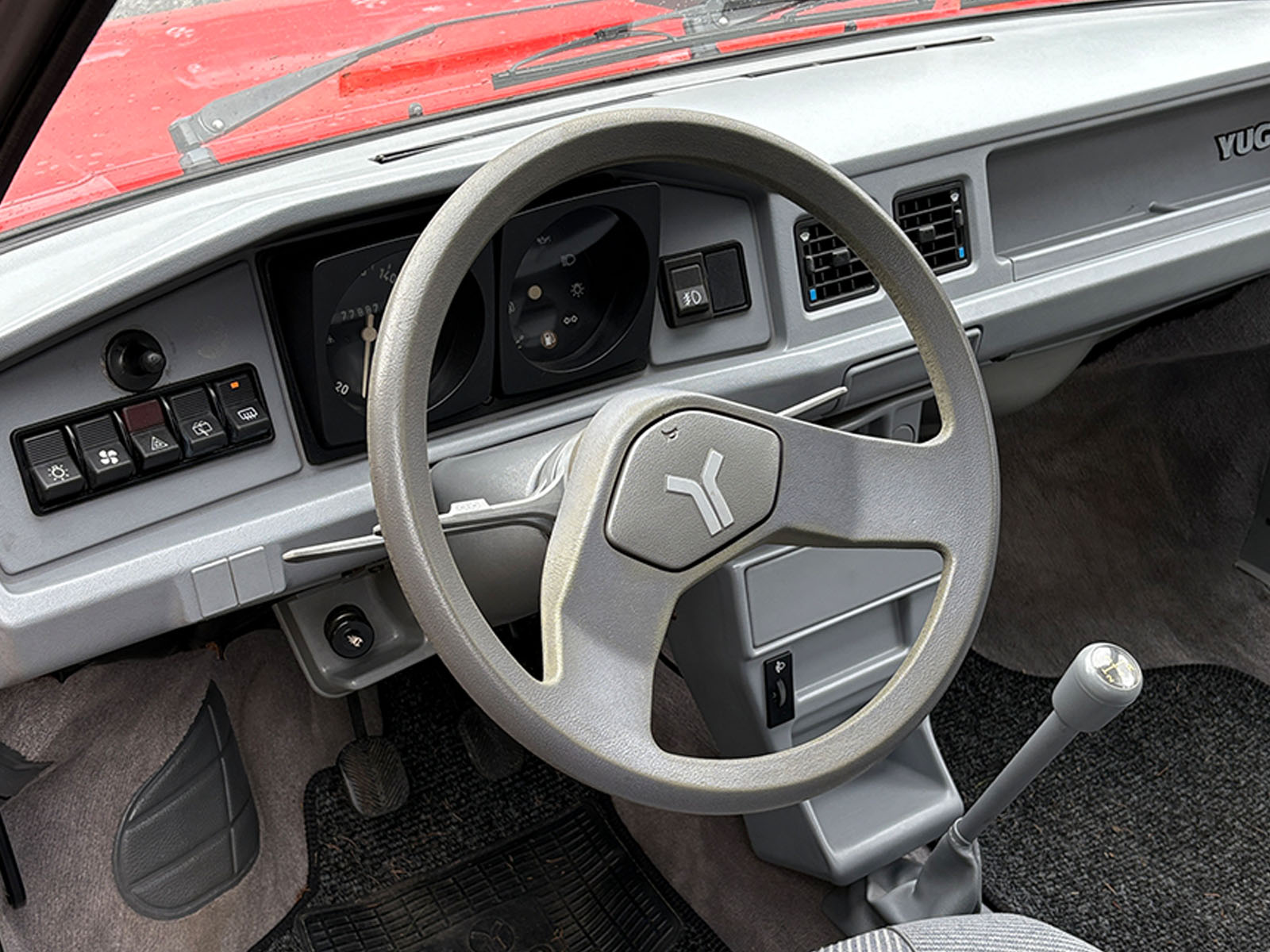
Getting in, the first thing that hits me is not the unjoyful shade of gulag grey everywhere – no, it’s the sinus-searing stench of glue holding the interior together. I have visions of that scene in The Rockford Files where Jim is driving utterly off his face on nitrous oxide. If hot-boxing solvent fumes makes me crash, that’s one less Yugo in the world, and I’ll be laughing my ass off about it. The factory assemblers must have daubed the liquidized dobbin on with a three-inch brush, but not to affix the dashboard, which is a riot of visible black screw heads. The dash itself looks like it was vacuum-formed as one big molding out of plastic that would shame an ice cream tub. The radii are huge, and tapping it makes a sound hollower than Bricklin’s sales pitch. There’s no glove compartment, no radio, no center armrest – in fact, no anything. All you get is two black orifices set into the binnacle – speedo in one and fuel gauge and all your warning lights stuffed in the other. To the left there’s a row of chunky rockers to for the lights, fan (?), heated rear window, rear washer, and hazards. Mold lines and switch blanks abound, and the flimsy stalks have a stiff feeling to their action that makes you think they’re on the verge of snapping. The total lack of build quality suggests these crates were thrown together from five yards.
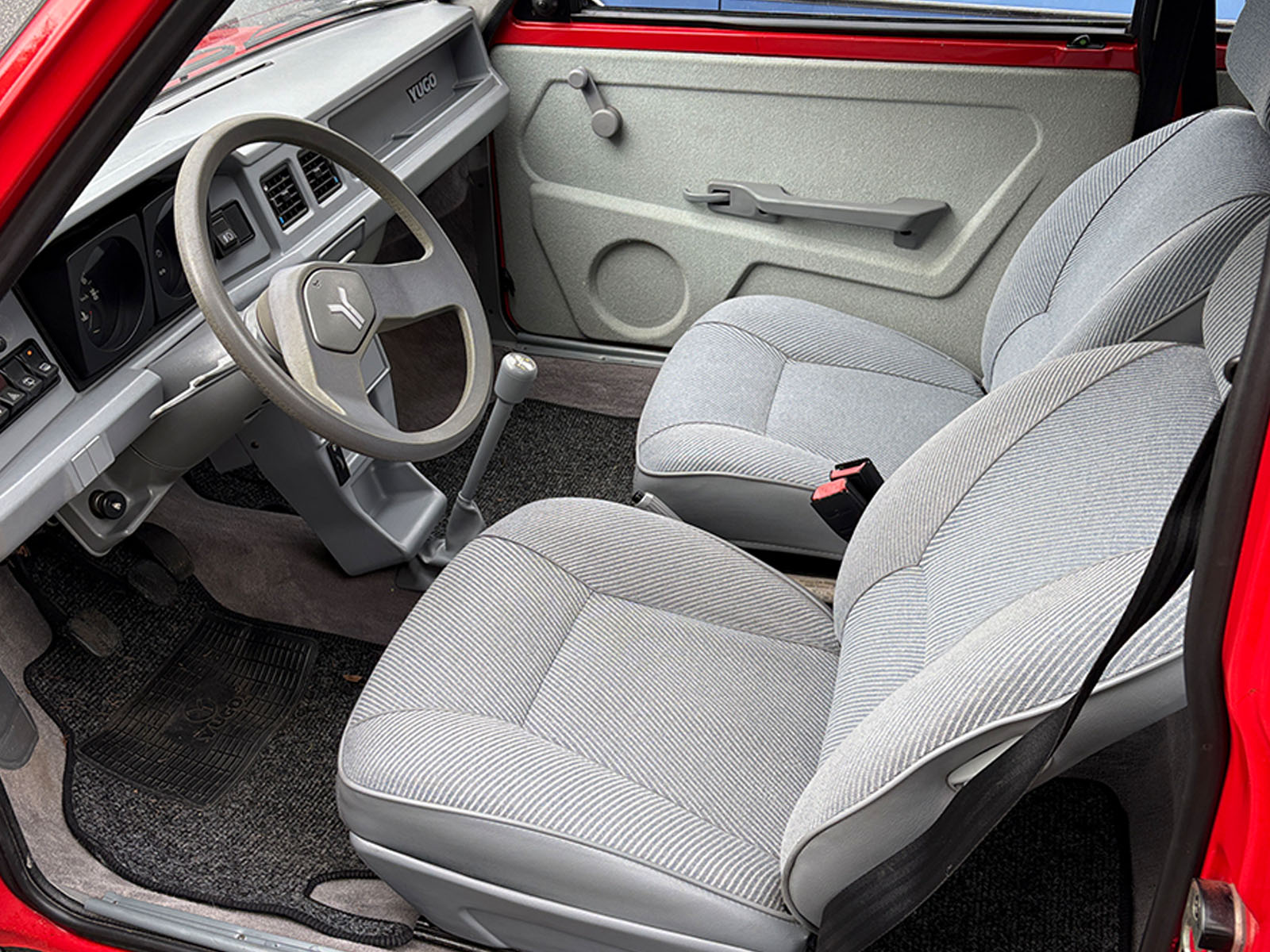
I try to adjust the seat but fail miserably because in another one of those that’s not how I expected it to work moments, the lever at the base of squab lowers the backrest, sending me flying backwards. I yank it back upright again because I’m not a gangsta. Crunched up under the cheap-feeling steering wheel, I give the tiller a wiggle, which reveals twenty or thirty degrees of pure free play before hitting any resistance. The pedals are too close together for my size eleven feet. High on glue fumes or not, I hate this shit heap already, and I haven’t even started the cursed thing yet.
Being the freeze-dried basic Yugo 45, under the hood is Fiat’s venerable ‘100’ inline four dating from 1955. It has a cast iron block containing a chain-driven cam, an aluminum head with valves operated by pushrods, and a single choke carb the diameter of a cat’s asshole. Displacing a whopping 903cc, all this non-innovative engine technology makes 45bhp and 45lbs ft of torque, transmitted to the road via a four-speed box with a shift action longer than a Belgrade bread queue in the eighties. Keeping the rubber on the tarmac are Macpherson struts up front and a transverse leaf spring at the hind end, which gives the Yugo a tail high demeanor like a skunk about to piss its pong juice everywhere.
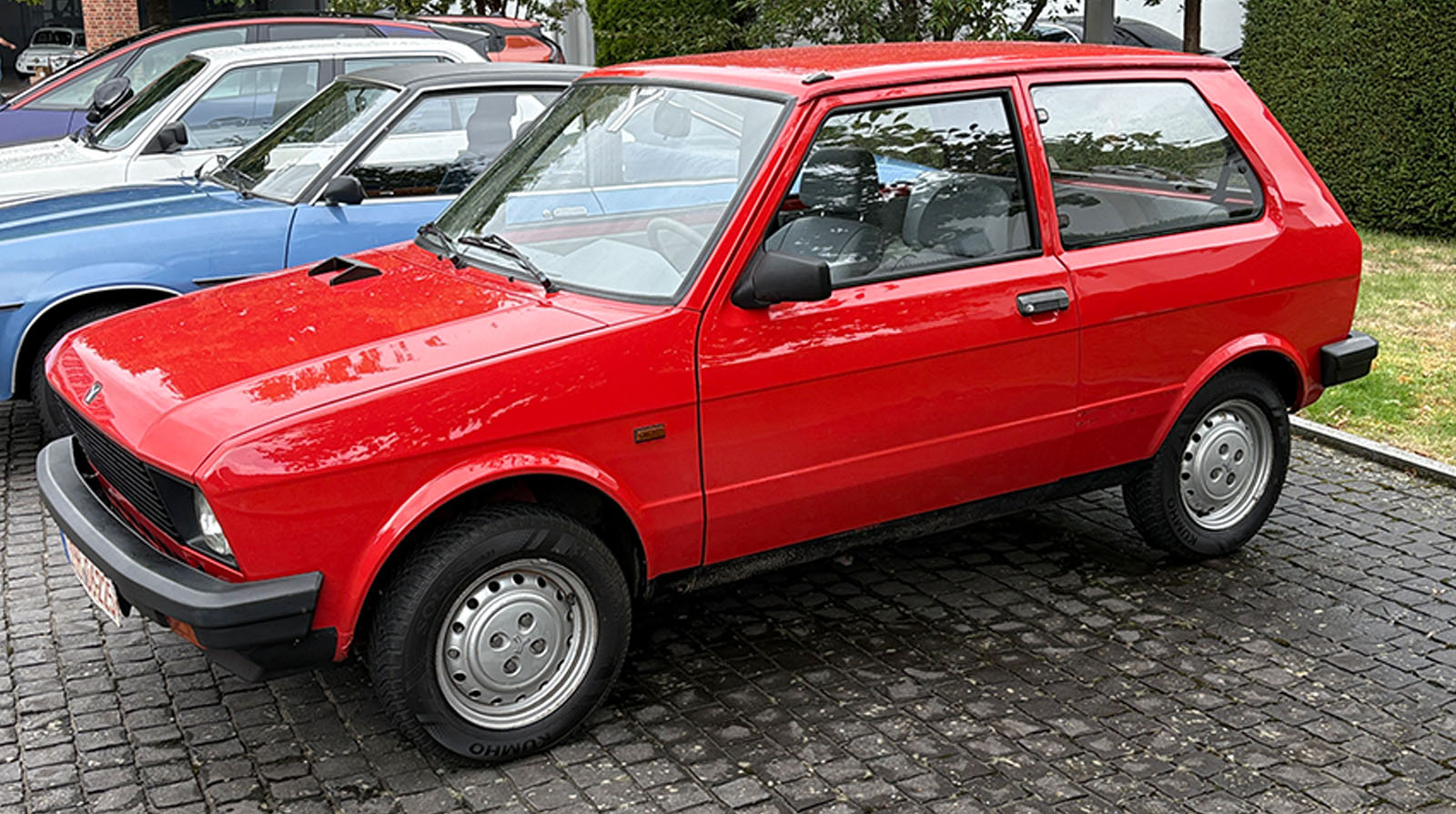
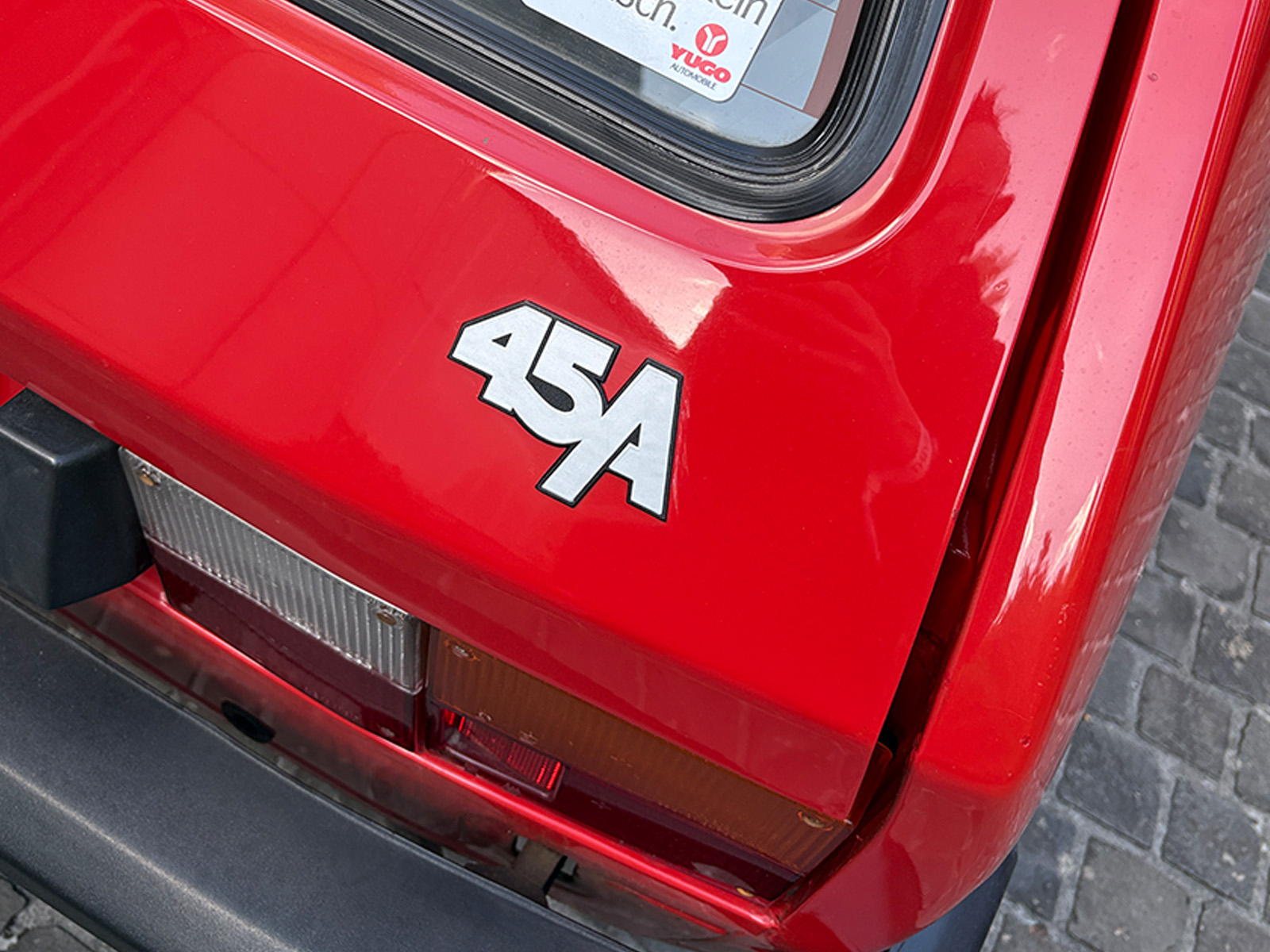
It’s Not Just Heavy, It’s Dog Slow Into The Bargain
Pulling away, the first thing that hits me is how physical this car is to drive. Once you freewheel past the dead zone, the steering enters the hernia zone. Not only that, it has a mind of its own, with an alarming tendency to wander all over the place as it pulls the plasticky steering wheel rim through your hands. It’s like trying to steer a shopping cart full of car batteries – if you don’t watch out, you’ll be going in a direction other than the one you wanted. The brakes present a similar muscle-building workout. Press the pedal and it’s solid, like there’s a kink in the lines or a seized caliper. There’s no movement and nothing happens. Strain a thigh muscle and eventually some speed begins to fall off, which, combined with the drunken body roll, gave me a large code brown at the first roundabout I encountered.
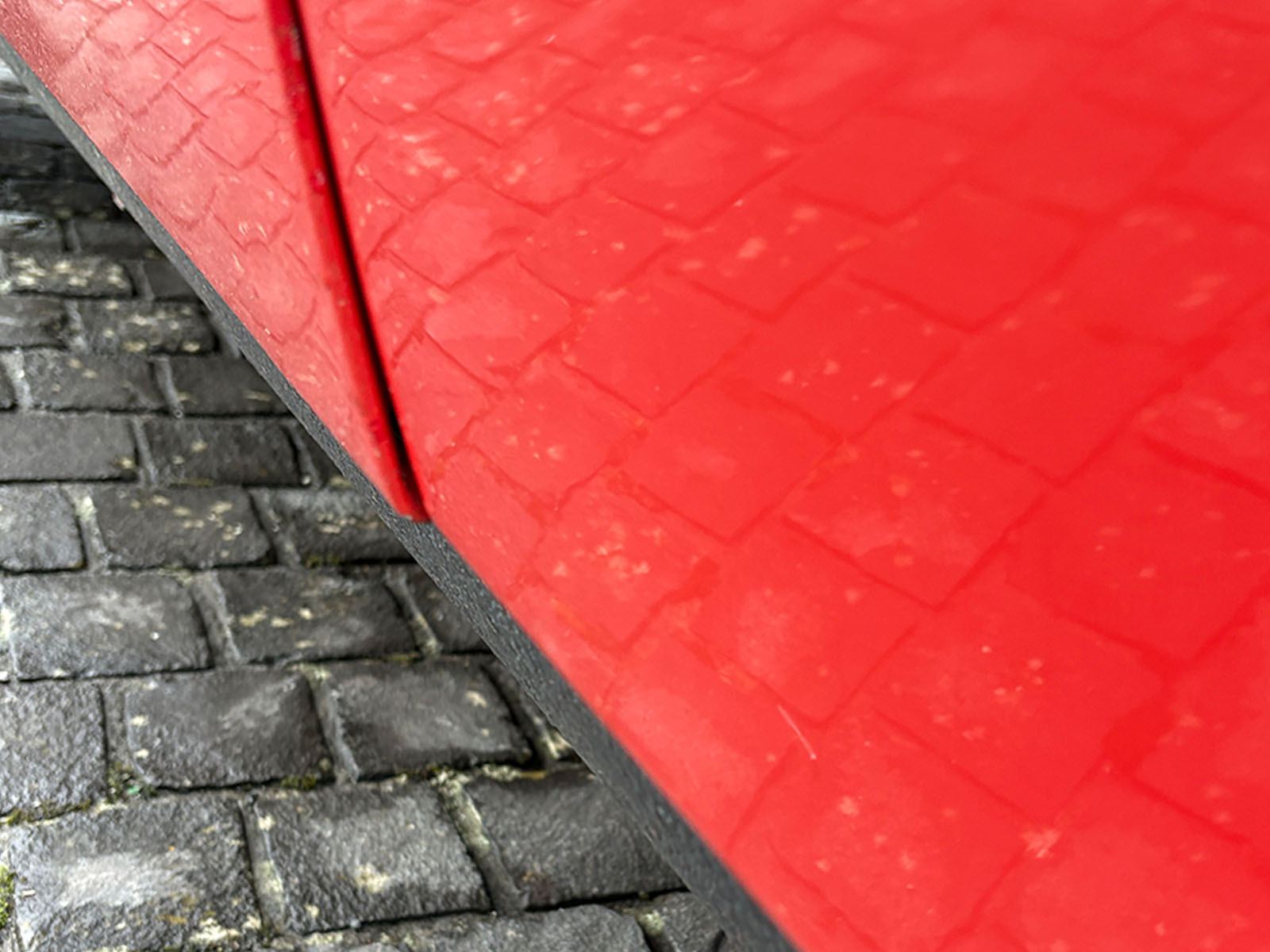
Luckily, none of this is happening at speeds that could be construed as fast. The speedo is in km/h, but the gentle rises on the landesstraßen sees me struggling to maintain much more than about 75 km/h (46 mph). On anything other than dead level (or downhill) tarmac, the motor just doesn’t have the torque to cover the gaps in the gearing inherent in a four-speed box. First gets you rolling, then it’s straight into second. Third is OK for urban trundling, but when the motor is screaming and you grab fourth, the revs drop off and the engine bogs hideously. Alternating between third and fourth to drive around the bogging just results in you pogoing down the road with the engine heehawing louder than the Concorde crashing into a saucepan factory.
At the top of this piece, I tried to describe what it was like trying to take one of the tight corners on the road out of Dietzhölztal. That wasn’t hyperbole: I genuinely was a mobile chicane. And the rain, which had been on and off since arriving in the Fatherland, was very decidedly on again. After about three-quarters of an hour subjecting myself to the Yugo, I decided I’d had enough of the fucking thing and found a spot to turn around and head back. Sometimes you just know things are not going to get any better, and this was one of those occasions. The Yugo was a dangerous menace to myself and other road users, and the sooner I gave the keys back, the better.
But as you’ve gathered by now, life doesn’t treat me like that. Safely back at the museum, enjoying a remedial coffee and cigarette, I reviewed all the video footage I’d shot while on my drive. I got a new phone recently, and in a spectacular example of ass-hattery, I’d managed to shoot everything in slo-mo. How this happened, I don’t know – I only hope it’s not the first episode of my drifting away from modern technology as I shuffle towards the grave. But it did mean I was going to have to go out in the Yugo again to re-film everything – my gift for being my own worst enemy continues to keep on giving.
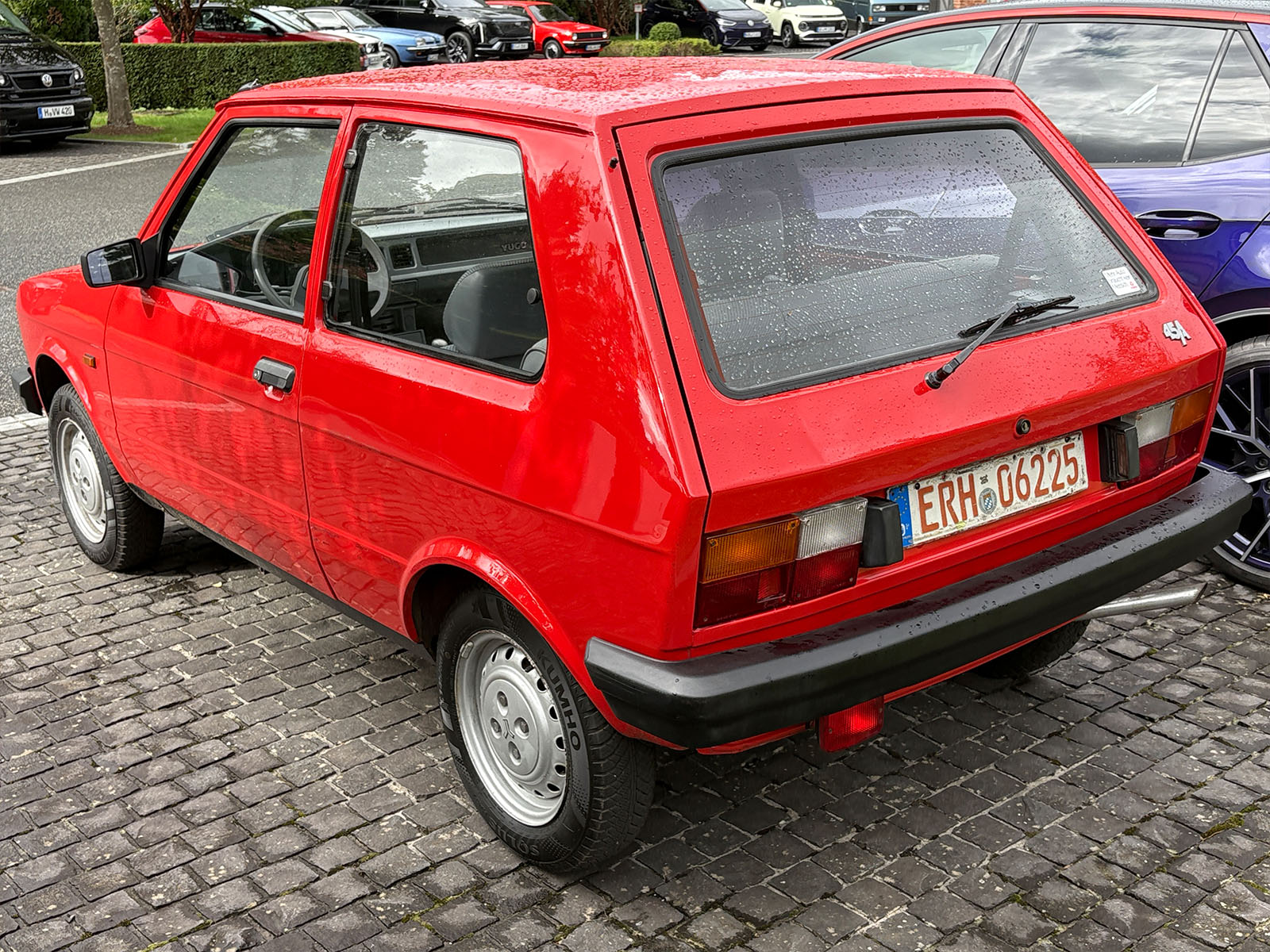
My First Piece Of OEM Swag
When I gratefully backed the thing into its parking space for a second time, one of the organizers bounded over in the pissing rain to greet me as I got out.
“Wow Adrian, you’ve been out in this twice, you must really love it!” said Nicole, smiling her most disarming smile.
“No. It’s the exact opposite of that. I unreservedly hate it with every fiber of my being, but I fucked up the filming and had to redo it.”
“Oh well. Here’s a keyring for you!”
And with that, she handed me my first-ever piece of OEM swag: a keyring. A fucking Yugo keyring. A memento to lie buried in a drawer, which will give me a jolt of PTSD if I ever glance at it, like when Facebook suggests a psycho ex-girlfriend as someone I should add as a friend.
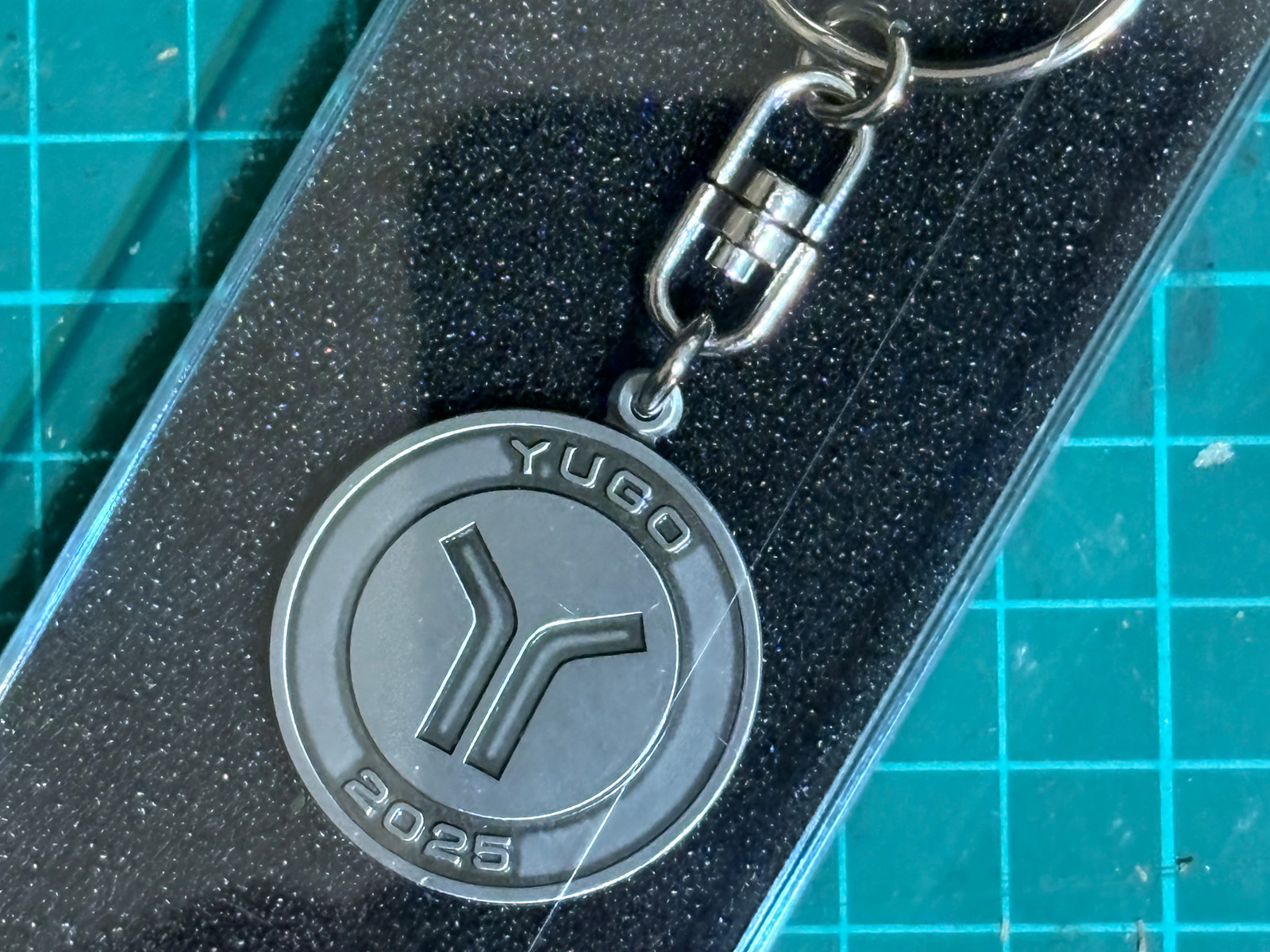
While doing follow-up research for this piece, I found an old drive feature of a Yugo 55 GLS in the October 1984 issue of Car magazine. The author takes a bit of a derisive and arrogant tone towards the car, and this was the prevailing attitude across automotive media towards Yugos (and other Eastern European cars) at the time. Likewise, the US Yugo kept late-night comedians in monologues for months. Normally, I’d dismiss all this as a pile-on and try and find something about the car I could defend, or even champion. But not in this case. The Yugo is comfortably the worst car I have ever driven.
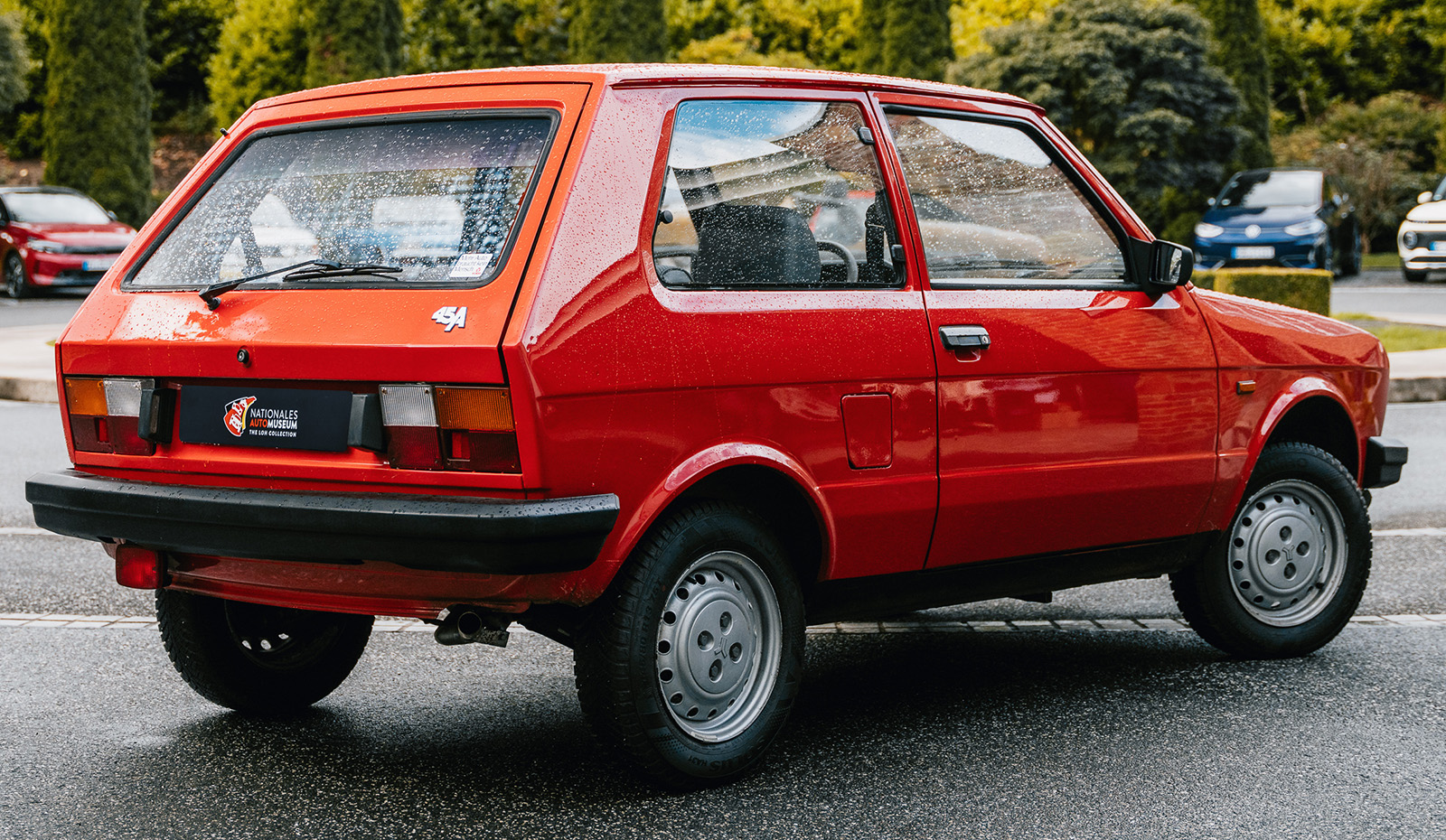
First a Ssangyong Rodius and now a Yugo. Welcome to my automotive media career. Where it’s always fucking winter and never Christmas.
Top graphic image: Car Design Event

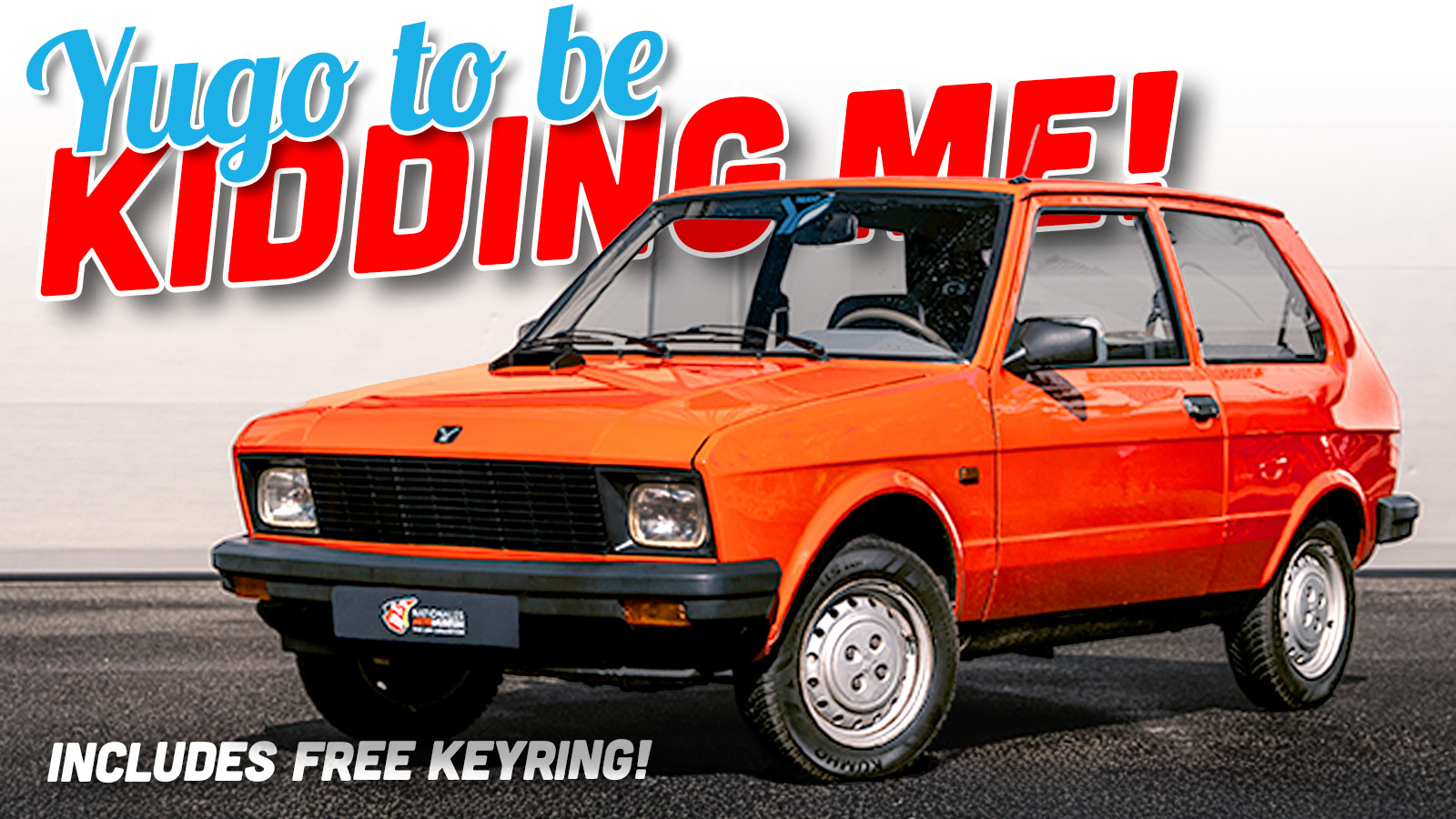







That was glorious.
Thank you. I’m not exactly on my game at the moment for various reasons but the vitriol finds a way.
“… so they built a new factory named Zavodi Crvena Zastava (Horse Boiling and Dangerous Toy Company, probably).”
Very luckily for me, I had already swallowed my lukewarm Sunday morning coffee before reading the above sentence. 😀
I’ve never driven or even ridden in a Yugo ever …only watched videos about them including that one Jason did in Brooklyn (I think) and the one from the Aging Cars Youtube channel of course. I remember when they first appeared on American roads (I was living in NY at the time) and they just seemed like a crappier version of a VW Rabbit (first gen Golf for Europeans). Noisier, slower, with worse interiors, but still: an affordable manual hatch.
Can they truly be as awful as you say Adrian? I read your review with interest, and can’t help but wonder if your stint of actual Ferrari ownership has affected your perception of junky, underpowered, tin cans? 😉
No. It was utter dogshit.
I’d probably have felt the same, but like to think I’d have found some redeeming quality or other to latch on to. 🙂
This is the Adrian we come to read…. Classic!
weird that they were able to take the clever lovable Fiat 128, and make a wholly unlovable Yugo out of it..
Sows ear from a silk purse. But the mechanicals were out of date by 1980.
Please stop beating around the bush and tell us what you really think of the Yugo.
“The Yugo is so knock-kneed that if it weren’t so bloody heavy for its size, a strong wind would blow it over.”
With a little help from poor (and somehow too-fast) driving, wind got an assist on the one that flew off the Mackinac Bridge (wind wasn’t the primary cause).
I found out about that while doing additional research for this piece.
Thank you for your review of this product.
Would you recommend this to a friend?
I wouldn’t recommend it to my worst enemy. Wait a minute……
Hey Hardigree, you should totally get one of these.
Ok, now THIS is what I became a member for. Great stuff, and apologies for suffering through this p.o.s. for us Adrian.
I had one of these as my first car. Of course, mine was in the US so we had the “big” engine.
It was a car and the alternative was walking; since I lived in the middle of nowhere, I was thrilled to have ANYTHING, so I was thrilled to have a Yugo.
I was not super thrilled to actually drive it since it was still very slow, unpleasant and overall a junkheap. It was a six year old car and it was already done. Rust everywhere, don’t slam the hood down or else more rust will crumble out. I bondo’d and sanded off the hatch as best I could, but still, be gentle with it. It overheated, little things broke constantly (ie, the internal door handle), it was just so flimsy in every possible way.
It did not help that it was a hand me down from my older brother who was rear-ended in it and he thought that it would go faster if he dumped the clutch constantly. Spoiler: all it did was burn the clutch up. By the time I got it, it had gaps in the body from the accident that let in water when it rained. Signals only worked when the headlights were off, so making a turn in the dark was a fun process of turn off the lights, signal, signal off (would blow a fuse if both were on), lights on. It had a radio, but the rear speakers were dead what with the intruding water from the accident. With what little power it had, it could slip the clutch in 3rd gear if you got on it too hard. It was only to be driven with the utmost care.
It’s top speed was 80 MPH on a (long) dead flat road. Getting to 60 was an exercise in patience, the one time I got to 80 it took about two miles of standing on the gas.
Eventually it kept overheating and my teenage self had no idea what to do. It was sold to a neighbor who took it home (while it was actively overheating) parked it in his yard and there it stayed until I moved away.
Everything stated here is 100% correct and thoroughly entertaining. While I am thankful that I had anything to keep me off the school bus, it was almost completely unlovable. Finding parts in rural Ohio was nearly impossible. It ran on a lot of “eh, close enough” parts that the guy at the Napa counter tried to help with. Bless that man, he really tried.
Perfect. After spending a couple days working ~40’ in the air on fans & heaters that last saw meaningful maintenance in the 20-teens from a 46’ boom lift with rapidly decaying batteries that seemingly hasn’t been greased since before Covid, I needed a dose of creative vitriol. Damned ifin I don’t feel better.
I’m really sorry that they put you through this but at the same time I love that they put you through this.
Be thankful it wasn’t a Rodius pendant.
Oh that’s a real comfort.
Fantastic review! Also, the cat asshole is definitely an underappreciated unit of measurement. Everybody has seen one, whether they wanted to or not, so there’s an established standard.
I mean, in 1983 the K car was wheezing around with 62 or maybe 84 HP and selling just fine. I recall that these little Yugo’s did pretty well if the non adjustable timing set up wis drill ed out and adjusted or swapped with an X19 setup. Same with the carb-based emissions system, which included an air pump and EGR valve. it was dark times indeed, and at least they tried to get better. I think the last of these things in the US had a 1.3 liter fuel injected motor. though the rest of the car was still built on par with anything made by Assan Motors(which funny enough was a south american Fiat Spazio)
Noone who bought one new was doing that.
no, it was usually the odd ducks who picked on up that was abandoned or nearly free after 30k miles of unfaithful service. I was not that guy, but my buddy’s dad was. he also knew a lot about small 2 strokes and managed to get an ugly old honda express to hit speeds over 50mph by simply tuning the mufler with a cone tapped in until the back pressure was ideal and then welding that in.
My god, Adrian. This absolutely PEAK Autopian, and it was absolutely the worst possible reading whilst on-camera for a work call. I’m sure my colleagues were puzzled by my uncontrollable bursts of laughter that must’ve been obvious even on mute.
“Horse Boiling and Dangerous Toy Company,” indeed. F’ing classic.
I think that’s a pretty cool keychain.
Yes but the price to get one is too high.
Toss it in the pile of crap y’all are mailing out to unsuspecting members lately! Your crap could become my burden!
After what I went through I’m not giving it away.
That’s how I feel about the 0E20 coin I found on the floor of Dublin’s airport after spending 90 minutes with American trying to get boarding passes printed but couldn’t because Aer Lingus fucked up the booking they made two days prior after keeping us in the fucking airport for seven hours and then on hold for two more hours. It’s MY 20 cents and I was NOT going to spend any more fucking money in Dublin. I put it with the four “Unfortunately, we are unable to fulfill your request. Please see an agent for assistance” error cars we received rather than our boarding passes to remember how much I hate Aer Lingus and, by extension, Dublin.
I like Aer Lingus because you go through US border control at Dublin, and there’s also an air side bar with a beer garden so I can smoke.n
The Customs portion is nice; however, the only Duty Free station inside that area was lacking the gin I was hoping to purchase. It also did not have samples which I would have happily downed that morning.
It’s like a US Air Force Combat Action medal.